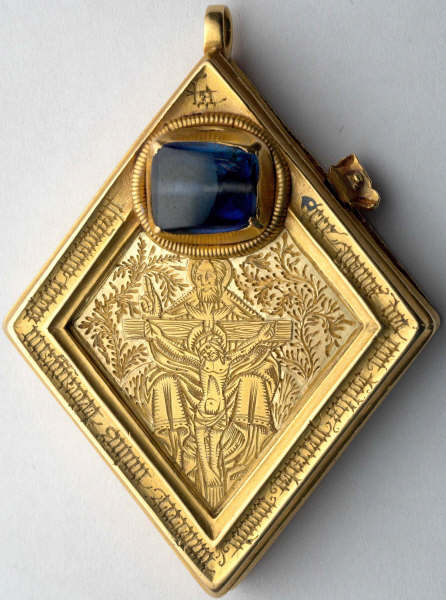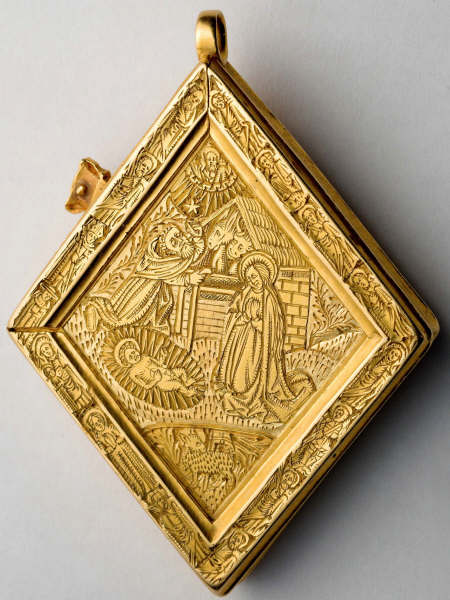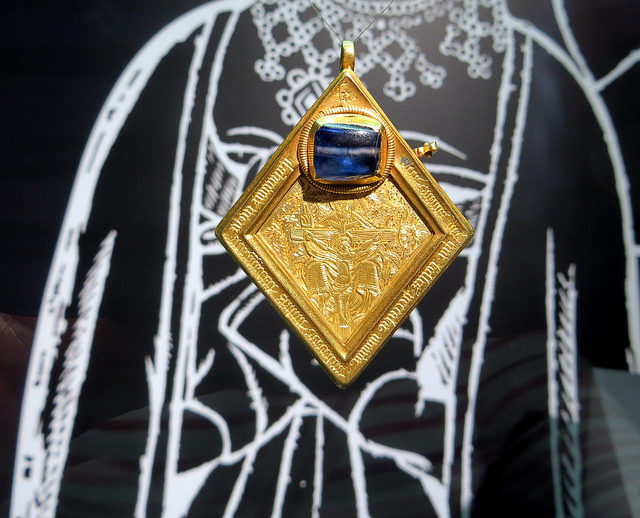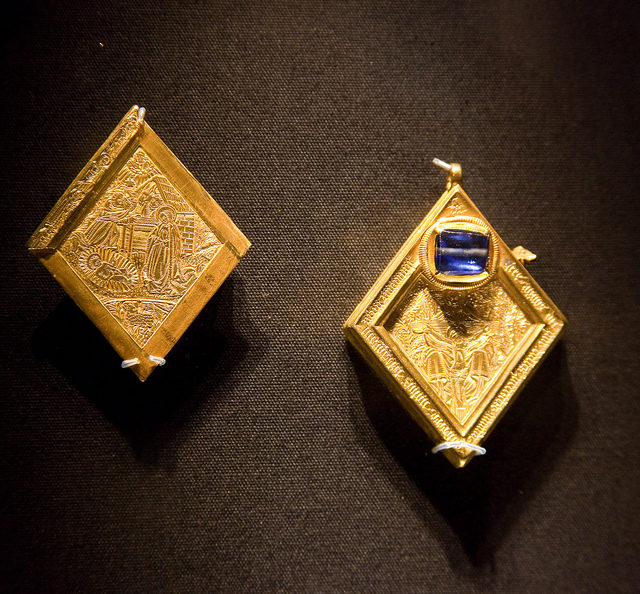The Middleham Jewel is a late 15th-cenutry diamond-shaped gold pendant made by the finest medieval goldsmiths in London. It was found in 1985 near the Middleham Castle in North Yorkshire which was the childhood home of Richard III.
It is a remarkable piece of jewelry because of the engraving of the two scenes of the Trinity and Nativity.


There is a blue sapphire stone set on the front face which is connected with the Virgin Mary and it was believed that the jewel was made to assist childbirth. Another belief is that the jewel was providing protection against illness curing headaches and poor eyesight. Also, the sapphire may represent heaven or have acted as aid to prayer.
The circle of the sun surrounding the sapphire is in the shape of the letter “o” and it’s connected with the Greek word ”omega” which symbolizes the end, the completion. There are holes on the side of the jewel which indicate that there was a frame around it, possibly once decorated with pearls.


On the front side, there is a scene of the Trinity, including the Crucifixion of Jesus and there is a Latin inscription which was a common recitation by the priest in mass. There is one particular word ‘ananizapta’ for which it was believed that it is a magic word, intended to protect people from drunkenness or epilepsy.
On the back side of the jewel, there is an engraving of the Nativity, with fifteen saints around the Lamb of God. Only a few of the saints can be identified as St George, Catherine of Alexandria, St Peter, St Barbara, St Anne, Dorothea of Caesarea and St Margaret of Antioch.

There is evidence from the late 15-th century that this kind of jewel was worn by noble ladies. It may have been owned by Richard III’s wife, Anne Neville, his mother or his mother-in-law because they all spent time at Middleham.
When it was first found, the jewel was declared lost and was sold at Sotheby’s in 1986. In 1992, with support from many fundraisers, it was acquired by the Yorkshire Museum. There is a replica of the Middleham Jewel at Middleham and the original can be seen in the Yorkshire Museum.
